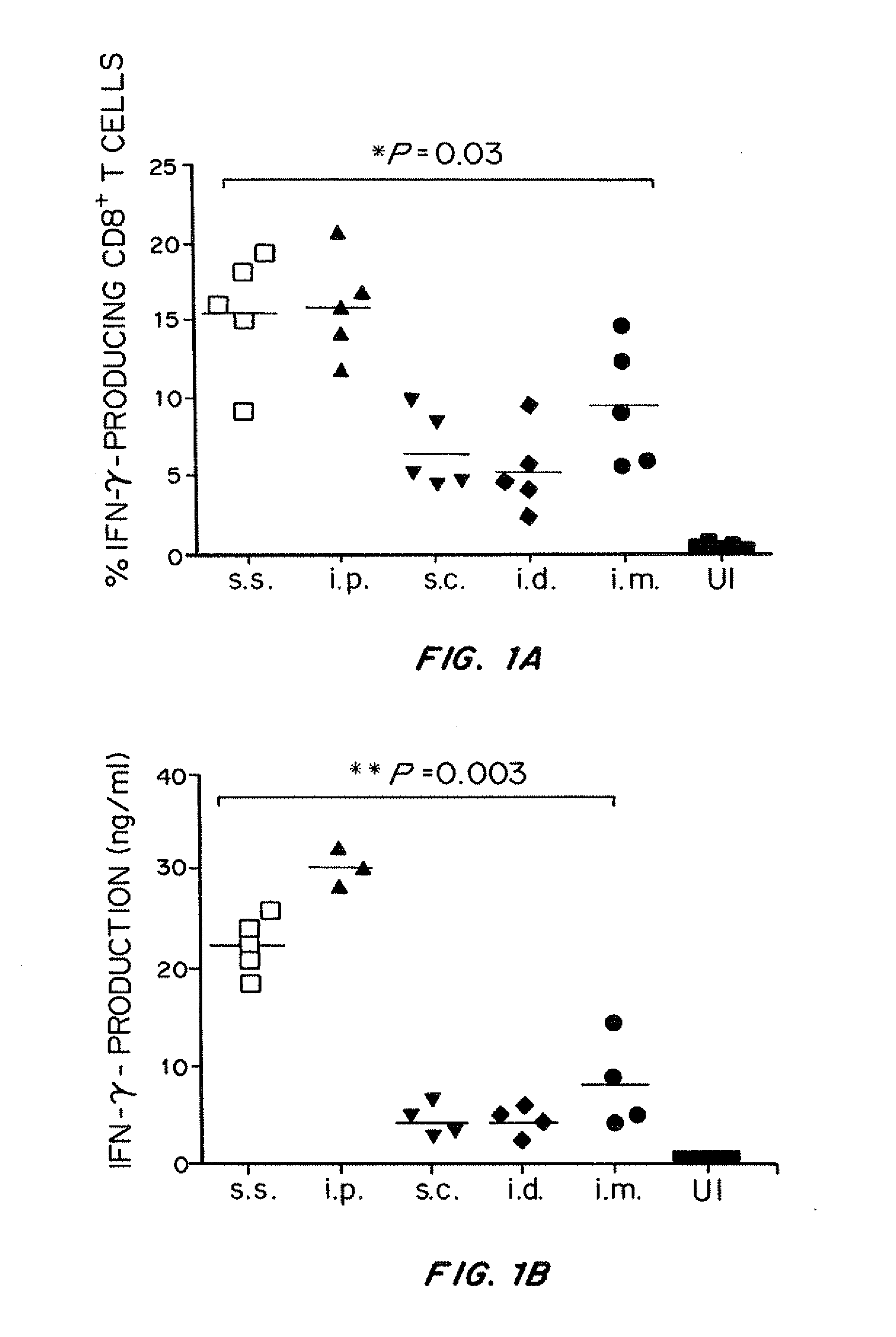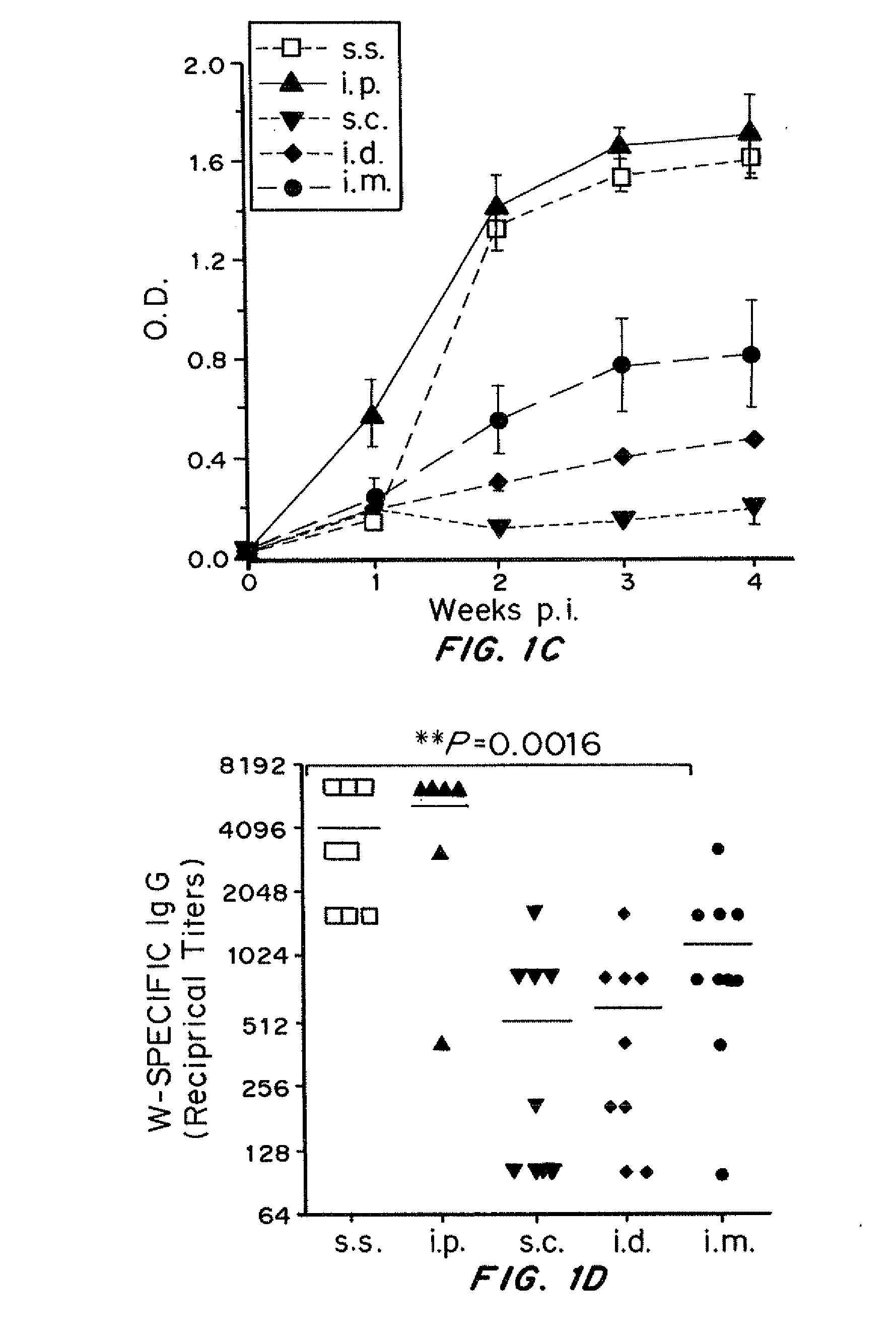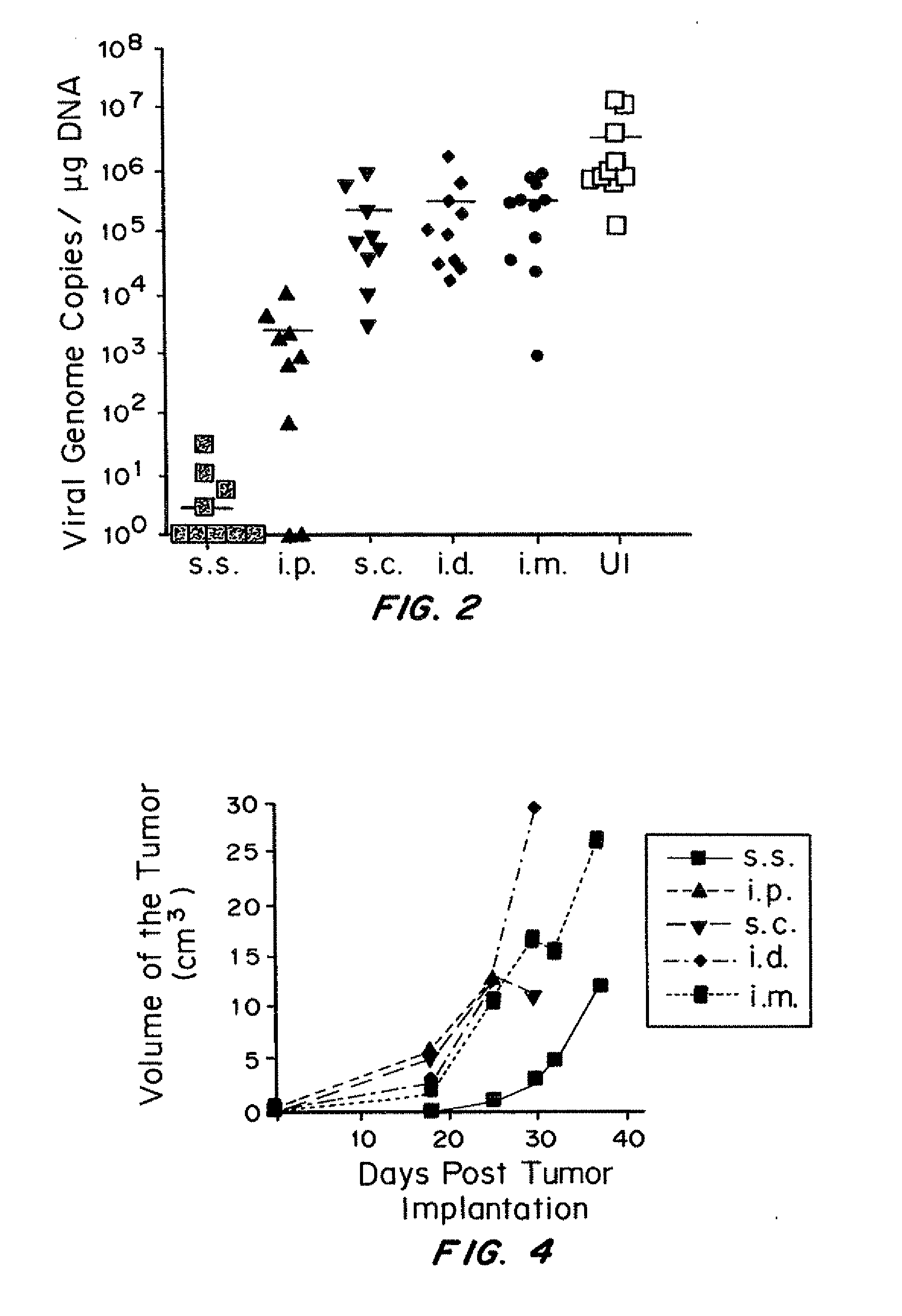T-cell vaccination with viral vectors via mechanical epidermal disruption
a technology of mechanical epidermal disruption and t-cells, which is applied in the direction of antibacterial agents, antibacterial medical ingredients, dsdna viruses, etc., to achieve the effects of strong immune response, lower dose, and stronger protection of the immunized hos
- Summary
- Abstract
- Description
- Claims
- Application Information
AI Technical Summary
Benefits of technology
Problems solved by technology
Method used
Image
Examples
example 1
Epidermal VV Immunization Via Skin Scarification Generates Significantly Stronger Cellular and Humoral Immunity than the Conventional Injection Routes
[0249]A mouse model of VV skin scarification was developed. The acute epidermal pox reaction developed in scarified mice closely resembles that of human smallpox vaccines. Using this model, a rigorous comparison of the primary and memory adaptive immune response following vaccinia virus (VV) immunization via skin scarification (s.s.), subcutaneous (s.c.), intradermal (i.d.) and intramuscular (i.m.) injection was undertaken. The highly immunogenic intraperitoneal (i.p.) injection route, although not used for immunization clinically, was included as positive control for VV-specific immune responses.
[0250]VV skin scarification induced significantly stronger primary and memory T cell response, as well as higher serum VV-specific IgG levels, compared to the conventional injection routes (s.c., i.d., and i.m.). Long-term T cell memory and se...
example 2
VV Skin Scarification Provides Superior Protection Against Secondary Antigenic Challenge
[0251]It was determined whether VV skin scarification could provide better protection against secondary challenge using three different models. The first challenge model was cutaneous poxvirus infection (via skin infection). This model was chosen for two reasons. First, clinically, the protection efficacy of smallpox vaccine candidates is evaluated by challenging vaccinated individuals with Dryvax skin scarification. Second, natural poxvirus infection can be acquired via cutaneous exposure to the viruses, especially at injured skin area. Following skin challenge, viral load in skin was determined by VV-specific real-time PCR (FIG. 2). Compared to unimmunized control mice, mice immunized by s.c., i.d., and i.m. injection all demonstrated partial protection, with 15, 9.5 and 3-fold reduction in viral load, respectively. 3-log reduction in viral load was achieved in i.p. immunized mice. Strikingly, ...
example 3
Memory T Cells but not Ab are Required for VV Skin Scarification-Associated Protection Against Secondary Challenge
[0254]To investigate the mechanism underlying the superior protective efficacy following poxvirus skin scarification, the relative contribution of humoral and cellular response in skin scarification-associated immune protection was studied. Wild type (wt) and B cell-deficient μMT mice were immunized with VV by skin scarification or i.p. injection, the two most immunogenic routes in this study. The memory mice were then challenged by secondary cutaneous or intranasal poxvirus infection.
[0255]As shown in FIG. 5A, when challenged with VV on skin, the i.p. immunized μMT mice had a viral load 4-log higher than that of the i.p. immunized wt mice. μMT mice immunized via s.s. route still demonstrated strong protection against cutaneous challenge, with a viral load comparable to that of the wt mice immunized via skin scarification. However, when T cells were depleted from the wt ...
PUM
| Property | Measurement | Unit |
|---|---|---|
| surface area | aaaaa | aaaaa |
| length | aaaaa | aaaaa |
| length | aaaaa | aaaaa |
Abstract
Description
Claims
Application Information
 Login to View More
Login to View More - R&D
- Intellectual Property
- Life Sciences
- Materials
- Tech Scout
- Unparalleled Data Quality
- Higher Quality Content
- 60% Fewer Hallucinations
Browse by: Latest US Patents, China's latest patents, Technical Efficacy Thesaurus, Application Domain, Technology Topic, Popular Technical Reports.
© 2025 PatSnap. All rights reserved.Legal|Privacy policy|Modern Slavery Act Transparency Statement|Sitemap|About US| Contact US: help@patsnap.com



